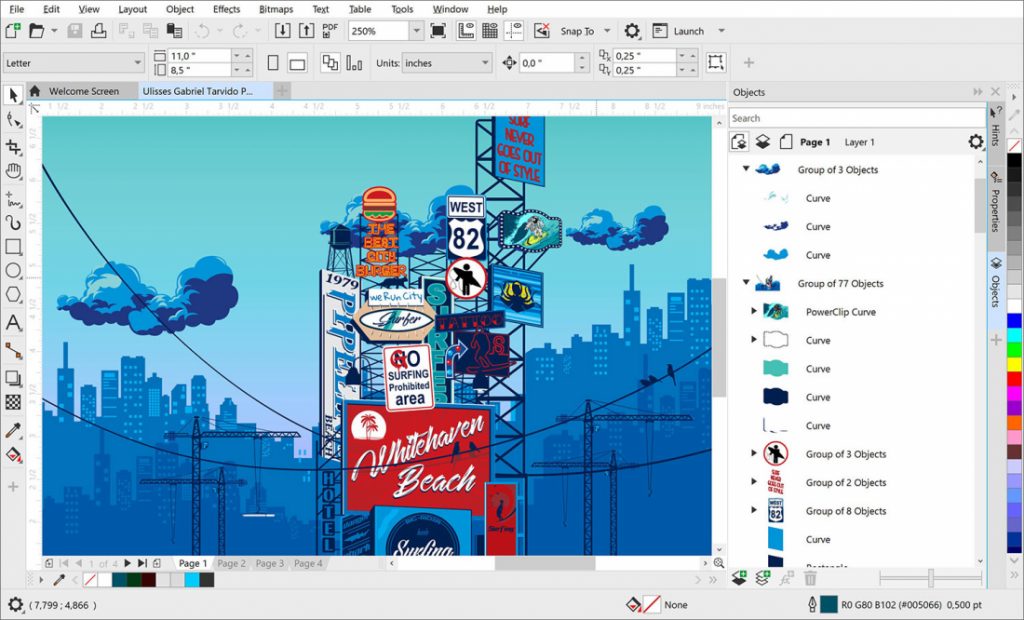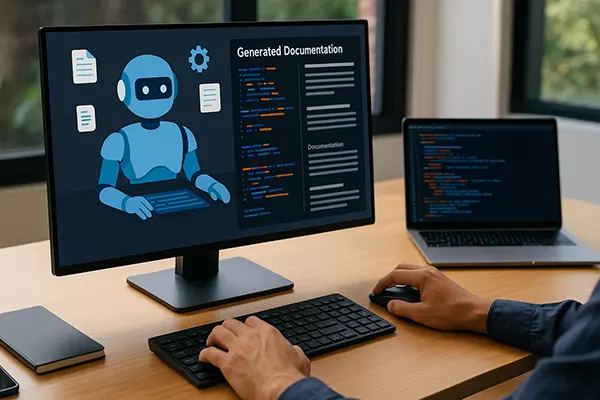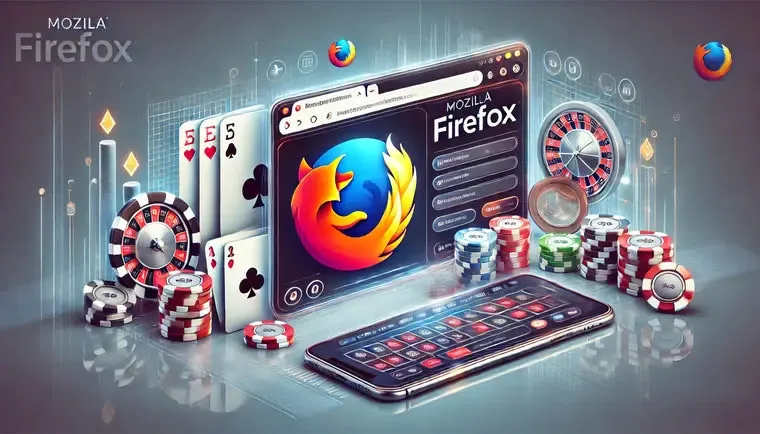
CorelDraw designer software overview
CorelDraw is designed for vector drawing and editing, as well as layout. It is a global favorite and is best suited for the apparel and textile industries. The app used to be Windows-only, but now that it’s available to macOS users, its audience is expanding.
With its biggest competitor, Adobe Illustrator, a significant player among professional graphic designers, Corel is working to more evenly distribute the market space to keep it up to date.
Beginning of work
CorelDraw is a complete page layout application in addition to being a drawing application. It’s a bit like Adobe InDesign and Illustrator in one program – with the addition of Photoshop, since CorelDraw can also perform filter-based effects on bitmap (bitmap) images, create bitmaps from vectors (and vice versa with the tracing function), and so on.
Corel has made it easier to organize the range of its applications. CorelDraw Graphics Suite 2022 consists of CorelDraw 2022 for vector illustration and multi-page layout, Corel Photo-Paint for image manipulation, and Corel Font Manager for font library management. There is also CorelDraw.app, a browser-based version of CorelDraw that can be used on the web, on the iPad, and for file sharing.

CorelDraw’s long-awaited appeal of ease of use versus the complexity of industry icon Adobe Illustrator remains solid, and setup is simple once you decide to upgrade to an annual subscription (including additional features and resources, and automatic updates) or purchase a perpetual license and opt out of add-ons and included updates.
When a new document is created, a clean and organized workspace appears with a helpful hint bar ready to point you where to go. New users get additional support from hover tooltip tool icons.
Distinctive features
Several features set CorelDraw apart from the competition. He has:
- customizable brushes and lines;
- mixing of forms;
- logical operations with paths;
- advanced fill options such as texture, fountain, PostScript and grid (envelope);
- color spaces for printing and screens (CMYK, spot, Pantone, RGB, HSB and grayscale);
- plugins and scripts.
Some add-ons include creating, designing, and validating a custom QR code, which is handy for adding to projects. QR codes are great tools for connecting audiences with smartphones to websites, videos, contact information, and even secret messages. You’ll also love Smart Shape Recognition, which automatically converts shaky freehand shapes into crisp, basic shapes with straight lines and right angles.



